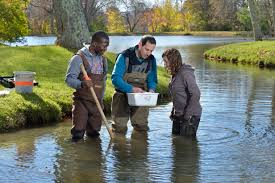
Nature photographers can catch the lightning tongue of the chameleon as it snatches an insect, or follow the growth of a plant through an entire season.
Time-lapse photography can make a plant appear to spring from the ground, flower and die in just a few seconds. A camera is fixed in position and programmed to take a series of pictures at intervals of minutes or hours. The film is then projected at the normal cine speed of 24 frames per second, speeding up the action thousands of times faster than reality.
It can take weeks to get a final minute’s worth of film, and the whole sequence can be ruined if the camera moves, or if anything obscures the object being photographed. Time-lapse photography needs scrupulously careful setting up and very reliable equipment.
At the other extreme is high-speed filming, which slows down action that is too fast for the human eye to see. The fastest modern cinecameras can take 11,000 frames a second, compared with the normal cine speed of 24 frames a second. The film moves past the lens at almost 200mph (320km/h), and the film spool is turning 33,000 times per minute. If anything goes wrong the camera is jammed with useless film in a split second.
Usually much slower speeds suffice: birds, bats and insects need 500 frames a second to show their wing beats and frogs leaping about the same, but it takes 1000 frames a second to capture the jump of the athletic flea. The highest speeds are needed for filming a drop of water splashing on a surface, a bullet penetrating glass, or a golfer hitting a drive.
Filming animals in the wild is fraught with problems. Even with a zoom lens, just getting near enough to most animals is difficult. Before filming, photographers often watch the animals for some time, so they know their habits and can position themselves in a good vantage point downwind.
Photographers sometimes have to use tricks to fool their audience. Films showing animals such as foxes prowling at night are in fact often taken at dawn or dusk, when there s sufficient natural light. Then the film is doctored using filters to make it look as though it was much darker. Occasionally animals really are filmed at night, but even with image intensifiers that make them easier to see, the pictures are still not very clear.
Many films of ‘wild’ animals rely on using half-tame animals or even trained ones. Several photographers have looked after birds from instinctively follow them everywhere. By mounting a camera on a truck or on a fast boat, the photographers can take close-up film of the birds as they fly behind them.
Many animals are filmed in studios. Some animals cannot be trained, and it is not practical to film them in the wild. The surroundings of a trout spawning in a mountain stream, for example, can be convincingly imitated in a glass tank. Many of the most intimate scenes of small mammals giving birth and bringing up their young are achieved by building nests in the studio with clear windows which enable the animals’ private lives to be filmed. These nests are shallow, so that the animals remain within focusing range of the camera. When the film is edited and combined with other film taken outside, the viewer never suspects that some of the film has been shot in the studio.
Some of the toughest problems come in filming forms of life too small to see with the naked eye, like tiny bugs or insects. They have to be filmed through a microscope, but that reduces the light reaching the film. Extra lighting is needed but care has to be taken that the heat of the lights does not damage the tiny creatures being filmed.
Another problem with filming such small creatures is vibration. Even the tiniest movement between camera and object destroys the focus. This difficulty is overcome by an ‘optical bench’ which is a platform with the camera rigidly fixed at one end and the creature at the other. If a passing lorry causes vibrations, the camera and object vibrate as one, so the film remains perfectly in focus.
Some of the most dramatic film can be taken with an arrangement rather like an upside-down periscope. A typical project might be to film an insect, at its own eye level, as it wanders over the forest floor. It can be followed as it disappears beneath a leaf, or dives underwater. The periscope is suspended from a camera running on rails on an overhead gantry, so that it can be focused while it is rotated, tilted or moved backwards and forwards.
Picture Credit : Google














